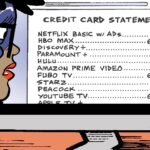 Viewability is stressing publishers out. Brands want more for less. Sites need to be redesigned. Every vendor brings different numbers to the equation.
Viewability is stressing publishers out. Brands want more for less. Sites need to be redesigned. Every vendor brings different numbers to the equation.
But some publishers, like Condé Nast and Tribune Media, are reaping the benefits of “embracing viewability.”
“We’ve seen our yields increase,” said Brad Agens, SVP of digital sales for Tribune Media, who was in the audience for a Wednesday panel on “The Evolution of Content” hosted by Genesis Media in New York City. Tribune Media created private marketplaces that allow advertisers to buy on high viewability, which have proved popular with trading desk buyers.
But on the direct side, an education gap remains.
“The one place I don’t see that lift is in direct,” Agens said. “If they bought direct, the minute you talk about increasing that CPM it’s almost confusing to them.”
Tribune Media’s focus on viewability has been aided by site redesign. Aimed to help the sites run faster, it also only loads ads after a user scrolls down, improving overall viewability.
Condé Nast takes a proactive stance on viewability, offering all advertisers 70% viewability. But not everyone takes the publisher up on its offer.
The premium publisher is still working out delivering viewable campaigns on the operations side.
“If we get an RFP with a viewability requirement, what do we do with it?” said Peter Elbaor, Condé Nast’s head of digital ad product management, during the panel. “Do we give it to ad ops? Or put it into Salesforce, then the order management system and the ad server? There are a lot of opportunities to mistranslate the requirements we need to deliver against.”
Plus, not everyone works with the same vendor to measure viewability, nor do they want to use the same standards, further complicating delivery, Elbaor pointed out.
On the buy side, Annalect CMO Erin Matts sees pushback from brands who want to pay 70% on the dollar for 70% viewability. “That’s a common reaction, and rightfully so,” she said. Brands also struggle to understand the difference between viewability and fraud, Matts added.
Once brands understand viewability, it’s tempting for advertisers to treat it as a proxy for engagement. That’s something that Jonah Goodhart, CEO of analytics firm Moat, cautioned against. “Viewability is a denominator, a minimum standard,” he said. “That’s different from a success metric.”
Large, splashy ads are often less viewable than small, ho-hum banners that stay 50% in-view for a second. “People are going to start changing their ad experience to game that [viewability metric], and it could be the race to the bottom,” Goodhart said. “They won’t do big visually arresting and stunning ads, it will be small little sprites all over the page.”
So looking at performance only in terms of viewability doesn’t make business sense; brands must measure beyond views.
“Part of our value prop is big beautiful ads at scale,” Elbaor said. “Then it’s no longer about viewability, but engagement.”














